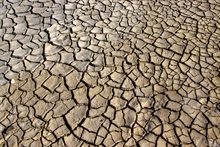How is the climate changing?
As a result of global warming, the climate is changing everywhere. Worldwide, this is producing increasingly more extreme weather, including on the islands in the Caribbean region. Climate change is exacerbating the impact of tropical hurricanes, storm surges, changing precipitation patterns, and periods of drought.

Why is the climate changing?
The climate is the average weather over a period of 30 years. It is not constant but rather changes over time, as a result of natural processes and human influences. Examples of natural processes affecting the climate are volcanic eruptions, differences in solar activity, and differences in the distance between the Earth and the sun. Human action affects the climate through the emission of greenhouse gases such as carbon dioxide (CO2) and methane (CH4). According to the Sixth Assessment Report of the Intergovernmental Panel on Climate Change (IPCC), it is a given that greenhouse gas emissions are the root cause of current global warming.
What are the main changes in the Caribbean climate?
More heat
As the climate is warming across the globe, the Caribbean islands will also become warmer. Scenarios devised by the Royal Netherlands Meteorological Institute (KNMI) show that global warming will continue throughout this century. As a result, the probability of heat stress and periods of extreme heat will increase.
Sea level rise
The Caribbean region is vulnerable to the rising sea level. According to the high-emissions KNMI scenario, the sea level may have risen by more than one metre by 2100. This will jeopardise land nature, marine life, and several economic sectors. For example, the islands feature many resorts, as tourism is an important source of income. Lots of these resorts are located on the coast, especially on the island of Bonaire. Furthermore, many tourists visit the islands for the coral reefs. These are also jeopardised by the rising sea level, in combination with ocean heating and acidification.

Less precipitation
The chances are that June, July and August rainfall will decrease in the Caribbean region. In addition, more moisture will evaporate from the air, which will lead to increasing drought. This will impact both agriculture and nature. Increasing drought also jeopardises water supplies.
Tropical hurricanes
As yet, it is not clear whether tropical hurricanes will increase in frequency. According to the KNMI ’23 climate scenarios, severe hurricanes will occur more frequently on the islands of Sint Eustatius, Saba, and Sint Maarten. This will be accompanied by increased rainfall.
Want to read more?
The section below lists examples of publications, studies, and projects relating to the impact of climate change in the Caribbean region.
- The Climate Impact Atlas for the BES islands provides more information on potential future climate effects. The Atlas comprises a viewer and climate narratives pertaining to Bonaire. It also contains climate statistics for Bonaire, Saba, and Sint Eustatius.
-
The Climate Impact Atlas for Curaçao (Klimakòrsou) shows all the information currently available about how climate change affects the island. It includes interactive maps, map explanations, visualisations, a mind map of climate impacts, and stories.
-
The Climate Impact Atlas Aruba shows all the information currently available about how climate change affects the island. It includes interactive maps, map explanations, visualisations, a mind map of climate impacts, and stories.
- The St. Martin Climate Impact Atlas provides information about the effects of climate change on the island of St. Martin, which includes the Dutch side, Sint Maarten, and the French side, the Collectivité de Saint Martin. The atlas contains more than fifty interactive maps, visualisations, map explanations, statistics, a mind map that shows how climate change affects the island, and stories by writer Rochelle Ward.
- With the KNMI ’23 climate scenarios, the Royal Netherlands Meteorological Institute has translated the global IPCC climate projections to the European and Caribbean Netherlands. Among other things, the KNMI video on the climate scenarios deals with mangrove management and restoration on Bonaire.
- In 2021, the IPCC compiled a fact sheet on the impact of climate change on the islands in the Caribbean region, the Pacific, and the Indian Ocean. Among other things, the fact sheet delves into sea level rise and changes in precipitation patterns.
- In 2022, Climate Adaptation Services (CAS) and EcoVision conducted a risk analysis for the Curaçao Port Authority (CPA). The report outlines the main climate risks and potential consequences for the Curaçao ports.
- The report on Flood risk profiles of the BES islands (pdf, 3.9 MB), published in 2024, maps out the main flood risks for the BES islands.
-
The report on Climate change and adaptation efforts on the BES islands (pdf, 3.9 MB), published in 2024, outlines the main climate impacts for the BES islands and the potential consequences. It also contains information on adaptation and mitigation efforts on the islands.